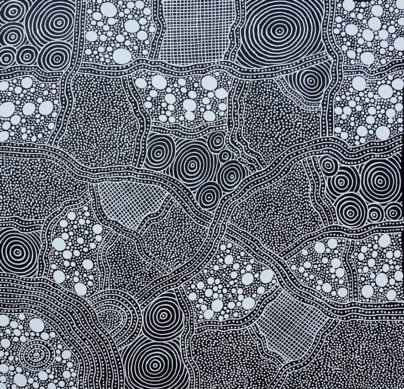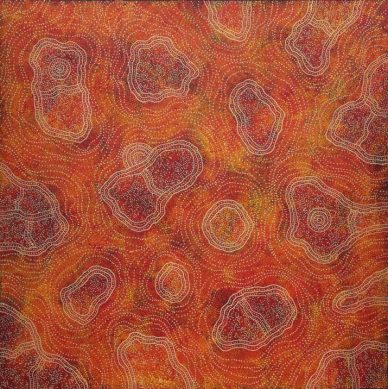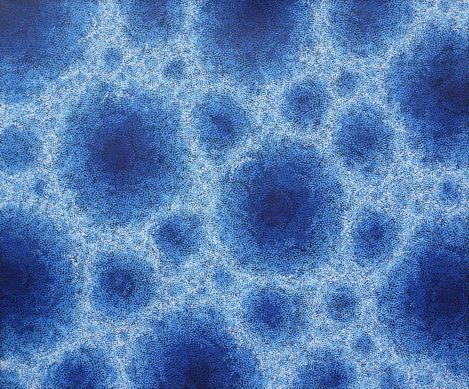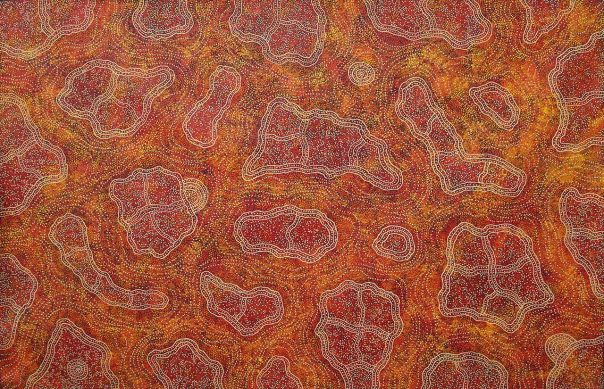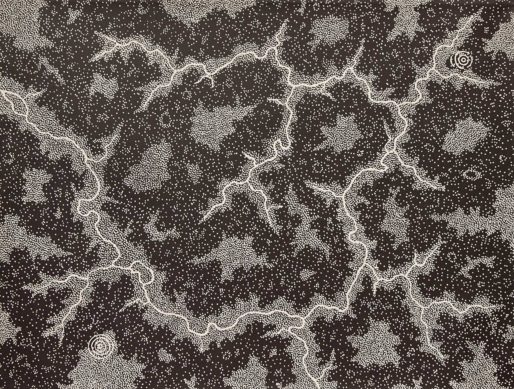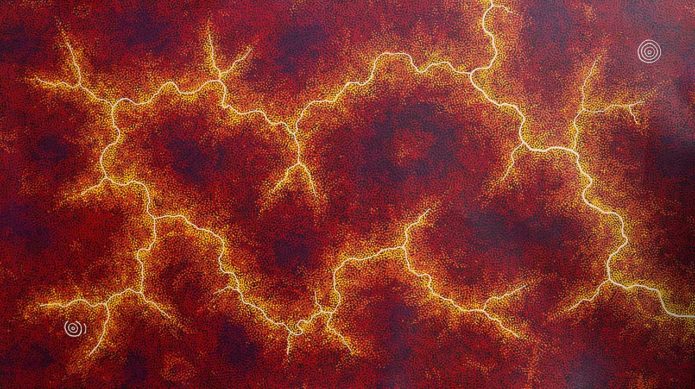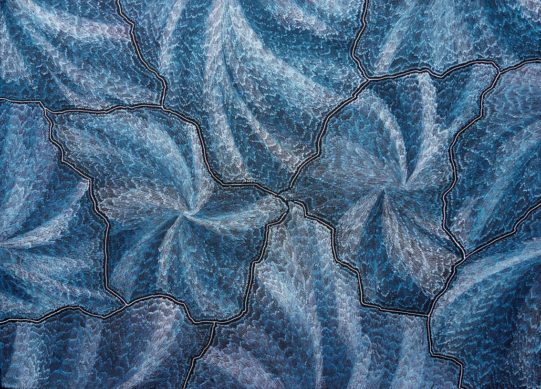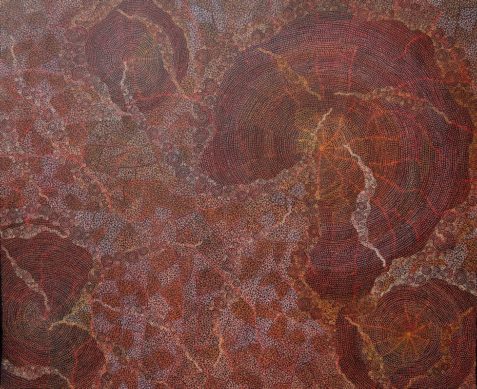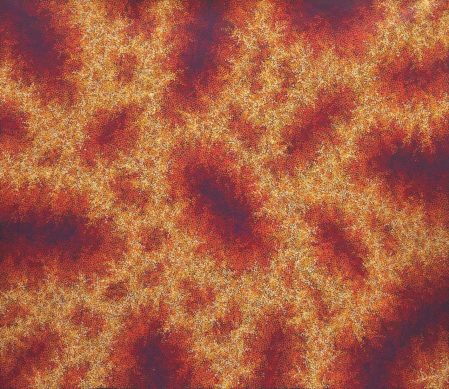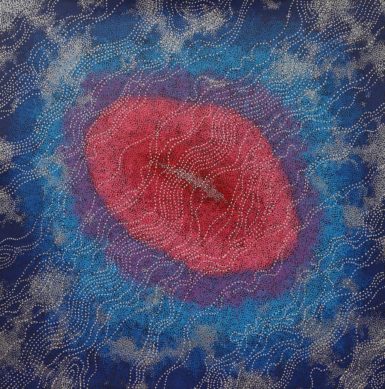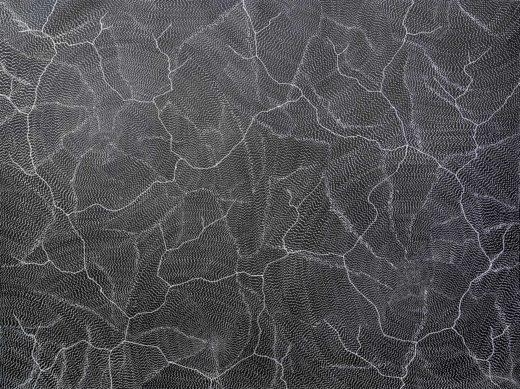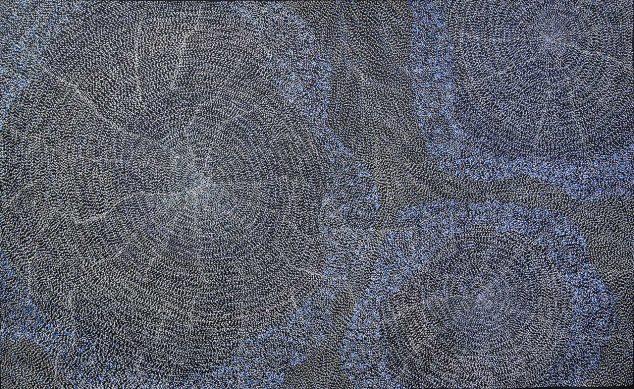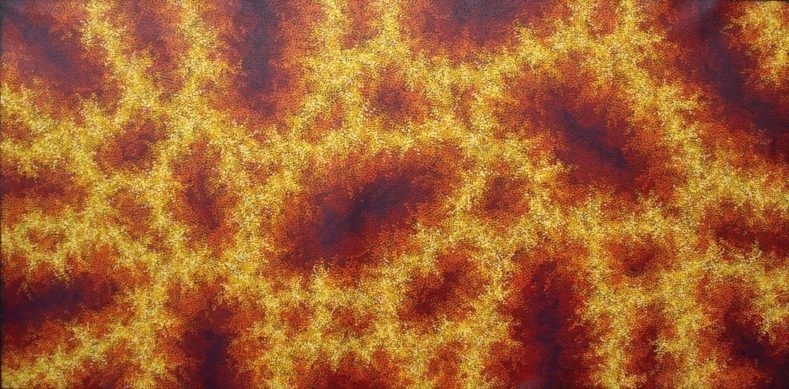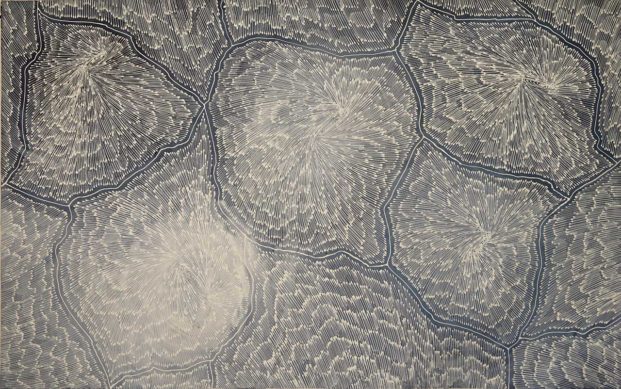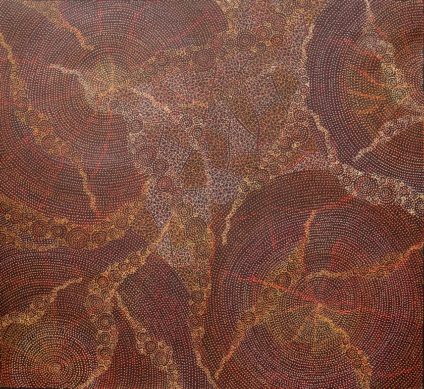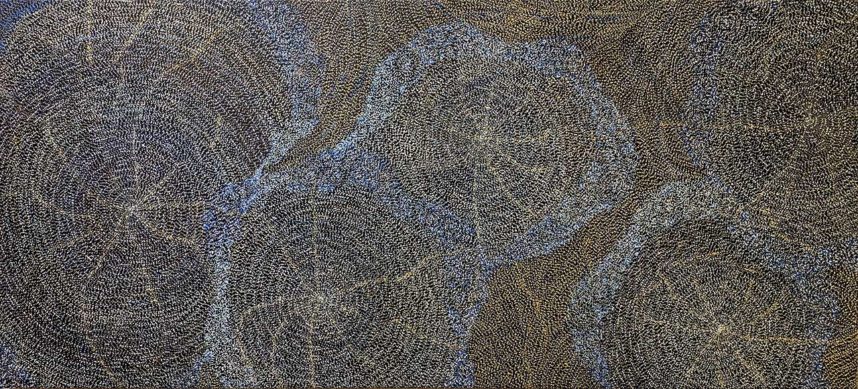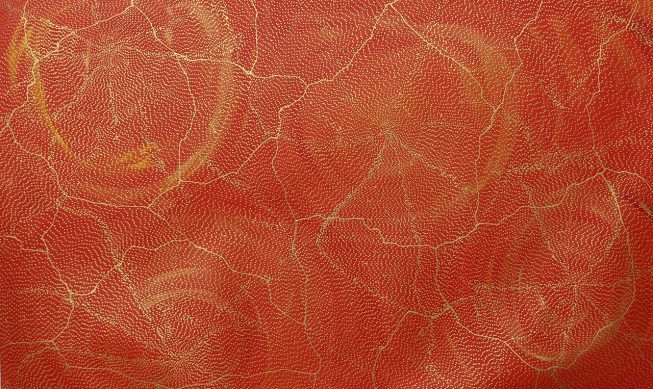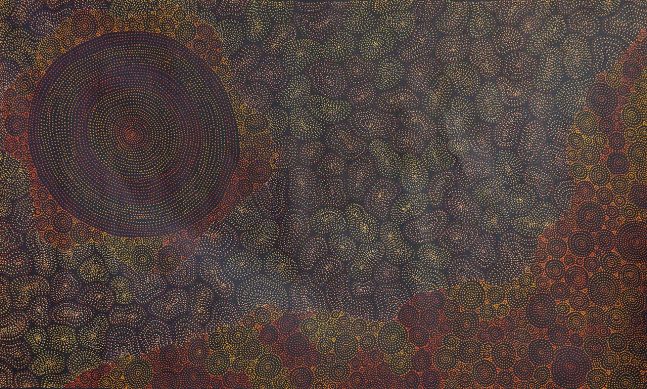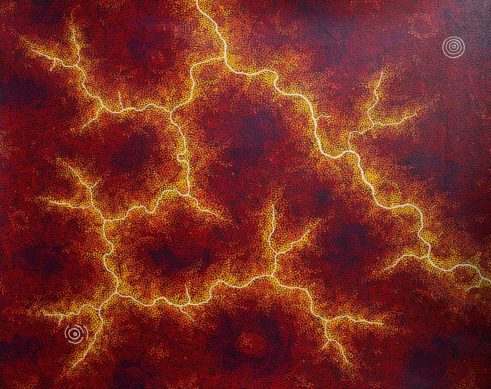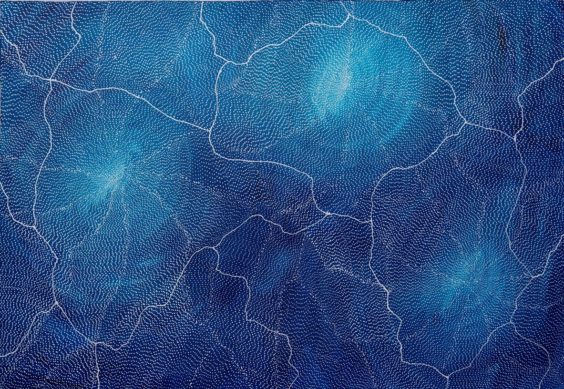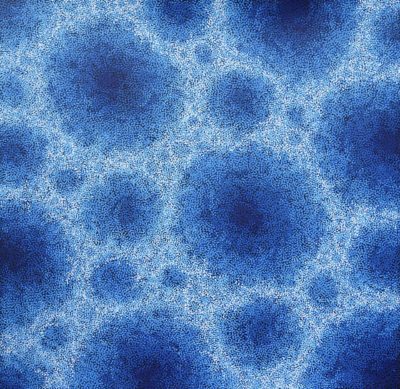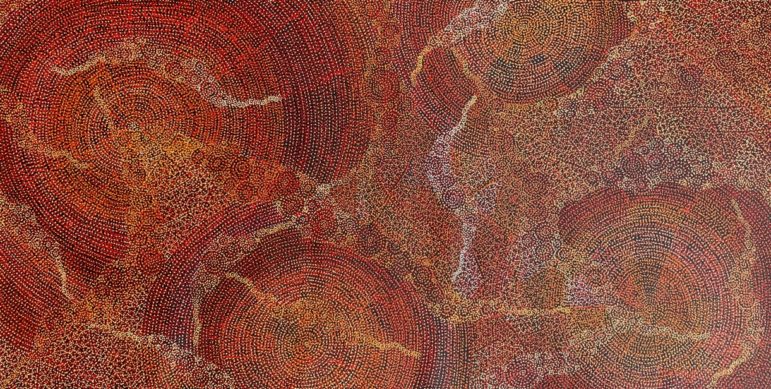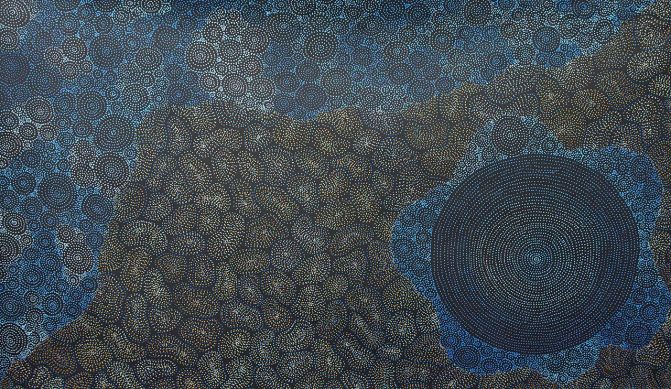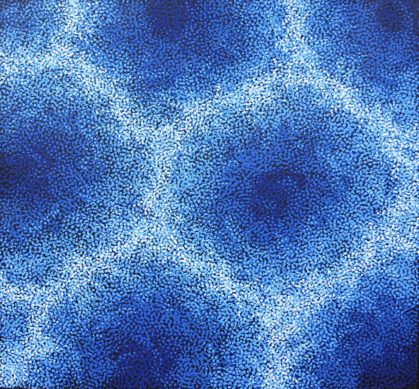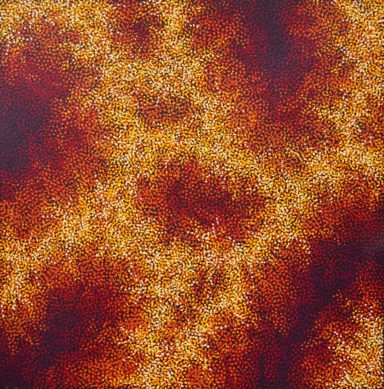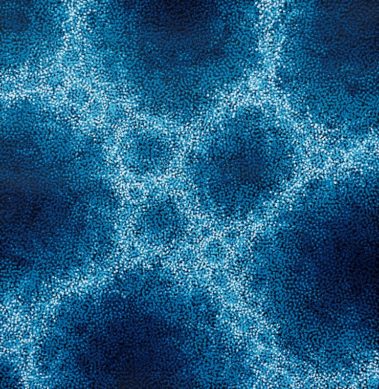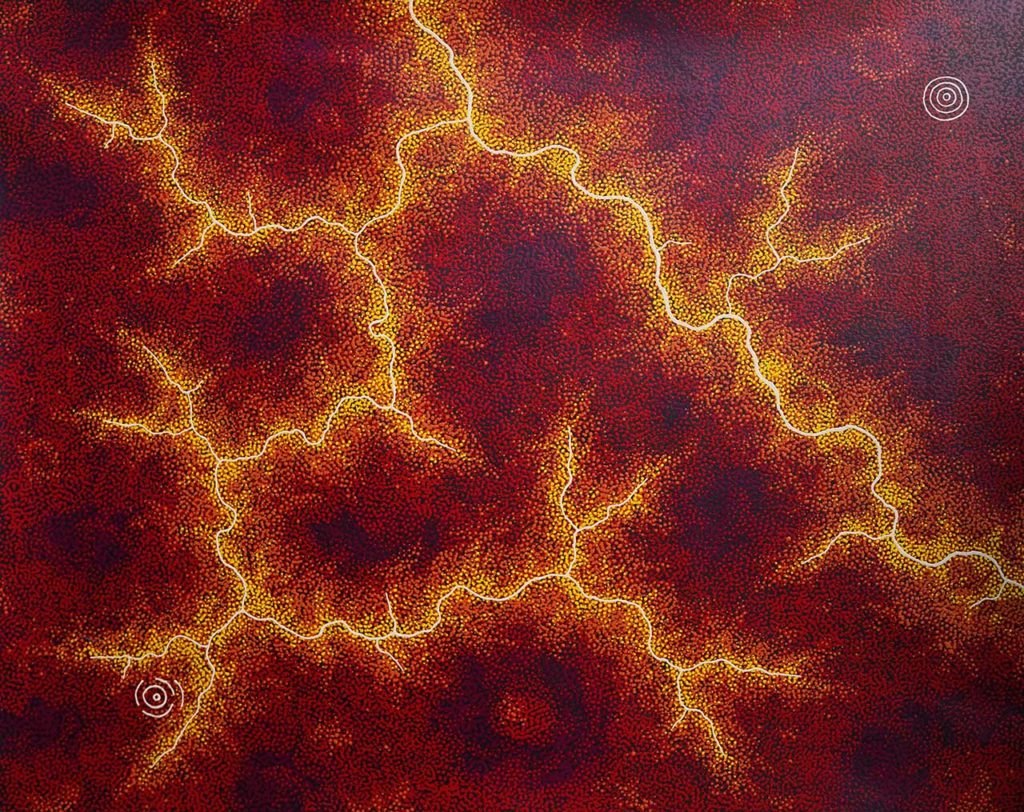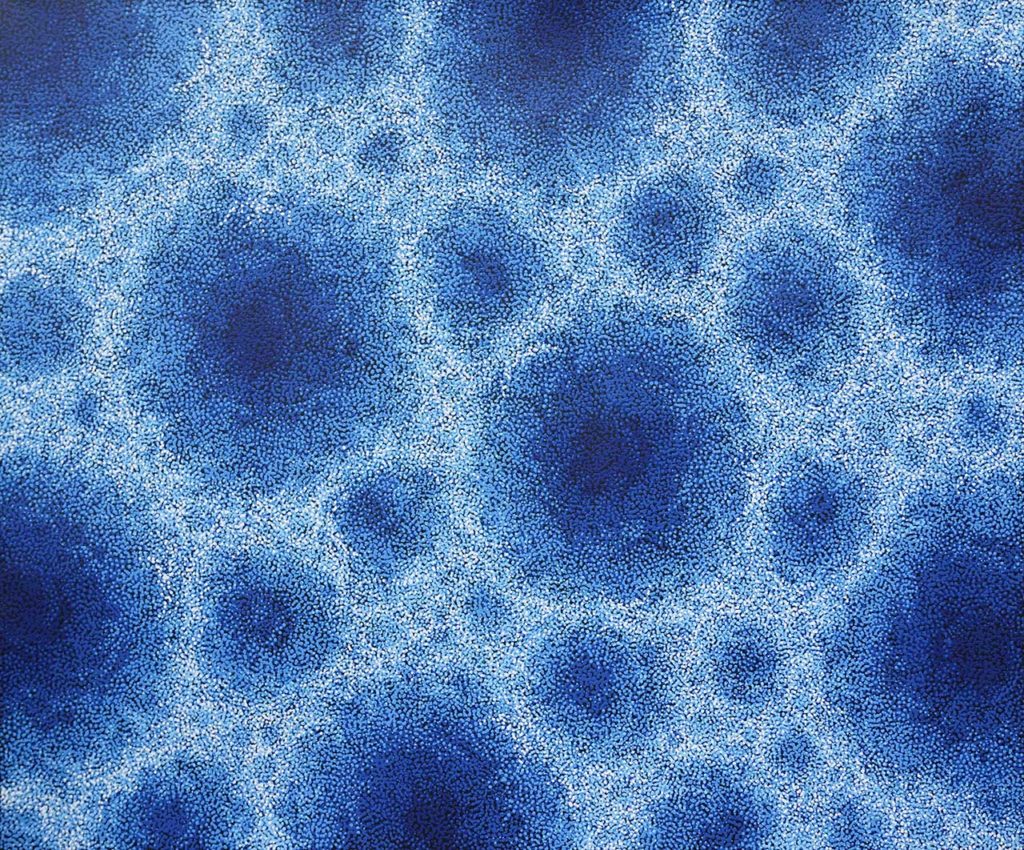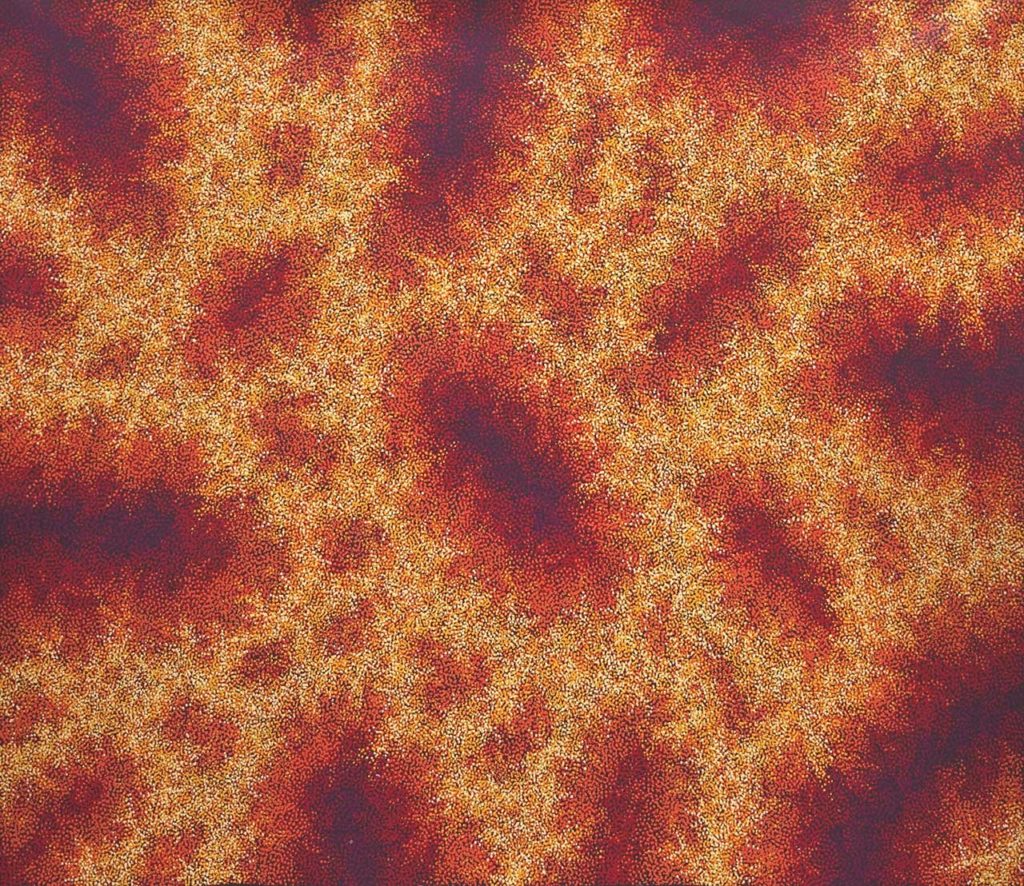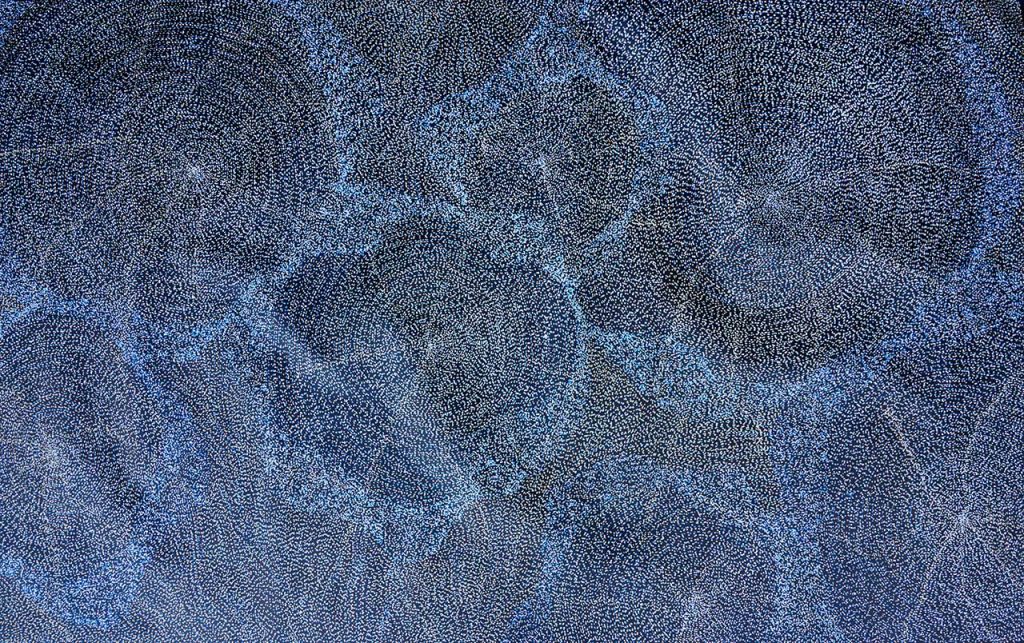Tarisse King & Sarrita King
Gallery 2
1 November – 20 December 2019
Layered paintings of fine dot-work define the artworks of sister painters Tarisse and Sarrita King. Now they have their studios 5,000 kms apart and continue to produce artworks that bind their lives and their connections to country and family. Both Sarrita and Tarisse build up their artworks with veils of fine dotting, where the images emerge from the canvas out of layers of colour dots floating on the painted surface.
Sarrita’s images of Ancestors trace the movement of her people around the terrain adjacent to waterholes, showing the use of the land as a resource. The artist uses the dry ochre colours to indicate the season, marking the shrinking of the waterholes as the drought lingers on. Tracks mark where the people have moved around the territory and made camps in new sections of country.
Tarisse includes images of water, focusing on the transparent surface of the water and the way it clusters the light and reflects movement below the surface. Her series Earth Images shows the land as a terrain map which feels as though it is being formed by deep underground forces. These two sister artists will be exhibiting their works from 1 November through to 20 December at Japingka Gallery.
Exhibition Walk Through
With David Wroth
There is a range of paintings in the exhibition reflecting the natural elements expressed in the works of Tarisse King. In this painting, called Earth Images, we see in one corner concentric circles that represent the place where people are camping on the land. Diagonally opposite in the other corner are concentric circles that are broken and fragmented. These represent a historical camp or a site that is no longer occupied by people. This is indicating people moving around the country in order to find different resources as the seasons change. There is an electric feeling that comes from the colour and the contrast of light and dark. The colours range from very deep dark reds and blacks right through to golds and whites.
This next work is Tarisse’s painting of water. She is a recording the surface tension of water. We see the dispersion and the clustering of areas made with very dark range of blue colours and then the shimmer of other areas where there is white and much lighter blue tones. Tarisse is often painting the elements, so as we look we come across fire, water, earth and air.
Tarisse’s painting of fire takes us to a place where we are looking at bushfire country from a vast distance, with hotspots and intense areas of red and orange flame. It could also be thought of as looking into the embers of the fire, where parts of the fire are glowing hot while the rest is a cooler yellow fire burning around it.
Sarrita King has continued with works from her series of Ancestor paintings. This work is very compact, almost a square format. It is a beautifully constructed painting using images of the waterholes drying up in the drought. There are markings where people are moving in and around the country as the waterholes contract and disappear.
This next work explores the theme of the ancestors in the wet season. Here the country is rich with water and the waterholes are full. The work is expansive, it is formed with colours of blues and sienna gold. It shows all the waterholes as they fill and people move back to the further reaches of country. They can move out to areas they have not been able to harvest bush resources since the last wet season. The stories of land and the natural forces that affect us all are played out in the work of these two well-established younger artists, Tarisse and Sarrita King.


